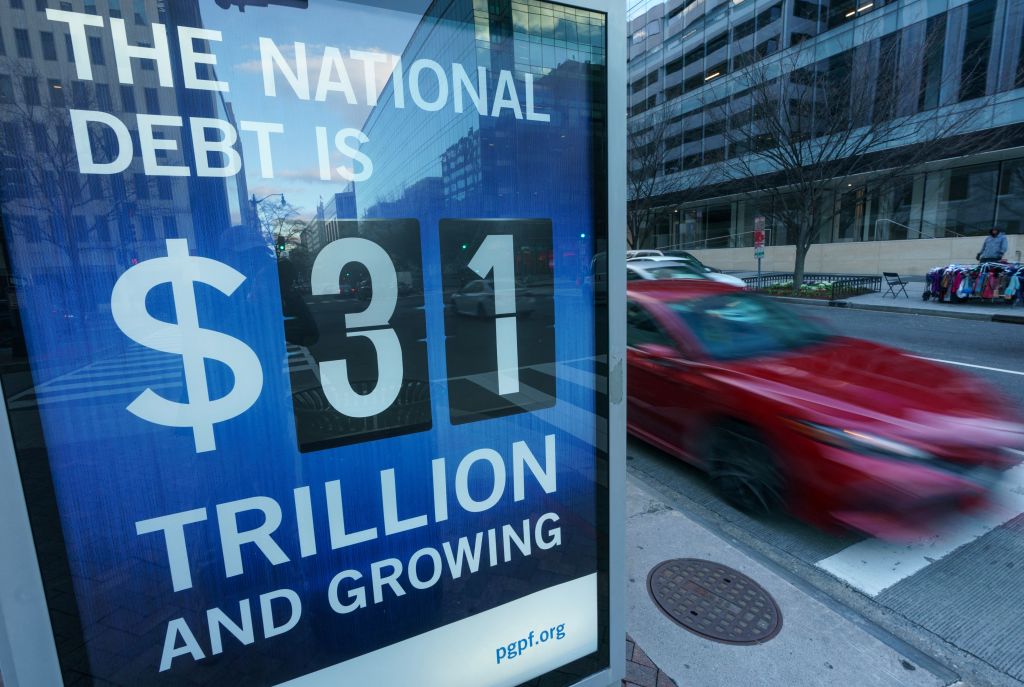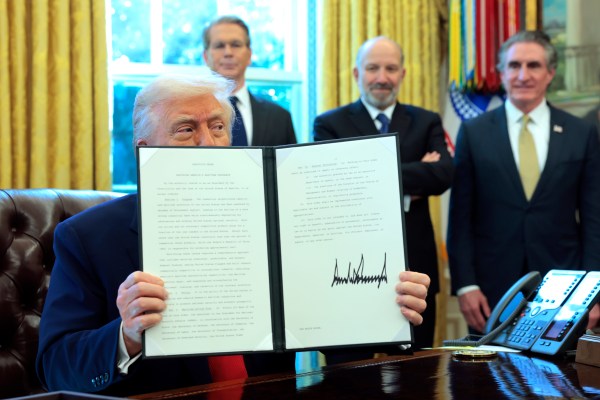Before I dig in, allow me a personal note: If you put me in a philosophy class, I am a pretty radical libertarian, but if you ask me how I want the government of these United States of America to conduct its business in the real-world here-and-now, I’m an Eisenhower Republican. I don’t love the debt-ceiling gamesmanship—I didn’t love it when Democrats, including Joe Biden, were doing it, and I resent that I’m apparently expected to forget that ever happened—and, in general, I prefer orderliness in administration and predictability in policy. I would prefer a politics of consensus to our current politics of apocalyptic imbecility.
All that being stipulated, the direness of the debt ceiling is in some ways exaggerated and in many ways misunderstood. Three ways of looking at it.
First, the math: Almost all of our media conversation about the debt ceiling is presented as though it were a foregone conclusion—and an economic necessity—that the federal government would default on its debt if the debt ceiling is not raised. There isn’t any reason for that to happen: We have something like $11 in tax revenue coming in for every $1 in debt service going out of the Treasury doors. Congress declining to raise the debt ceiling would not change that. The federal government does not have to borrow money to have enough to keep current on its obligations to bondholders—in fact, when you are obliged to borrow money to make good on current debt obligations, that’s when you really are in a debt crisis, and we are not there. (Yet.) It is the case that the federal government would not have enough money to pay for all authorized spending (that is why we borrow in the first place) but there is no financial reason that should mean defaulting on the debt rather than suspending or deferring some other spending.
Owing at least in some part to what looks suspiciously like an intentional campaign of obfuscation to me, much of the media has taken to use the word “default” in such a way as to blur the distinction between a debt default—which would be economically catastrophic—and deferring or forgoing other congressionally authorized spending. The latter would not be a great outcome, for all sorts of reasons, but it is not the same thing as a debt default and nowhere near occupying the same height of seriousness.
In fact, there has been some debate about passing a law that would specifically require that debt service be prioritized over other kinds of spending in the event of a cash-flow interruption. That has been opposed by Sen. Mitt Romney, among others, and, in this case, the admirable gentleman from La Jolla pretending to be a gentleman from Utah is in the wrong. An explicit commitment to prioritizing sovereign-debt obligations over other spending would send a useful message to the credit markets, even if, as Sen. Romney rightly worries, it would at the same time create another avenue for idiotic parliamentary brinksmanship.
Second, urgent policy challenge: When Republicans first started feeling their oats about this round of debt-ceiling theater, there was a lot of very big talk about putting forward a detailed fiscal agenda spelling out specific spending cuts that Republicans would like to implement in order to put the country on a more stable fiscal basis, which came to—approximately squat, of course. Actually whipping the budget into shape requires two things that congressional Republicans do not have: a capacity for hard work and a modicum of political courage.
The federal deficit is going to run about $1.4 trillion this year and about $2 trillion thereafter for the foreseeable future, if no changes are made. So, how do you cut $2 trillion out of the budget? Do you know what $2 trillion looks like? It looks like all of Social Security plus all of national defense. It’s about all of welfare (“income security”) plus all of Medicare plus all of veterans’ benefits. It is roughly 40 percent of all the federal tax revenue the Treasury expects to collect in 2023.
Third, consider this a dry run for the coming crisis: The Treasury may not have a statutory basis for prioritizing debt payments over other spending, but when you have $1 in your pocket and $1.40 in bills to pay, then you are in the realm of fact, not the realm of legislation. Congress could pass a law tomorrow holding that Kevin D. Williamson is a better gymnast than Simone Biles, but don’t expect to see me executing a Yurchenko double pike in the near future. The law can say whatever Congress wants it to say—but reality is going to have its say, too.
If we do not do something about our national finances, then we will reach a point at which the debt ceiling is no longer a matter of congressional action but a matter of what the credit markets are willing to bear. Congress can authorize more borrowing, but that doesn’t mean that bond investors have to lend the government money. And when the market says “no,” then you are in a crisis, “because this massive accumulation of debt was predicted, because it was foreseeable, because it was unnecessary, because it was the result of willful and reckless disregard for the warnings that were given and for the fundamentals of economic management,” as Joe Biden put it when voting against a debt-ceiling increase during the George W. Bush administration.
Because we are not yet in such a crisis, we do not have to solve the problem all at once. We do not have to enact radical and disruptive change overnight. We have lots of tools in the toolbox, lots of options, and lots of resources—we can reform entitlements, put a leash on discretionary spending, rationalize the tax code, and take other steps to bring revenue and spending into something more closely approximating balance. That will not be easy or pleasant to do—but it will be much, much worse if we are forced into making radical immediate changes by the restrictions imposed by the credit crisis toward which our federal government has pointed itself. Take in the current debate and then imagine a situation in which raising the debt ceiling simply is not an option—because that is where we will eventually end up if we do not reform our finances.






Please note that we at The Dispatch hold ourselves, our work, and our commenters to a higher standard than other places on the internet. We welcome comments that foster genuine debate or discussion—including comments critical of us or our work—but responses that include ad hominem attacks on fellow Dispatch members or are intended to stoke fear and anger may be moderated.
With your membership, you only have the ability to comment on The Morning Dispatch articles. Consider upgrading to join the conversation everywhere.